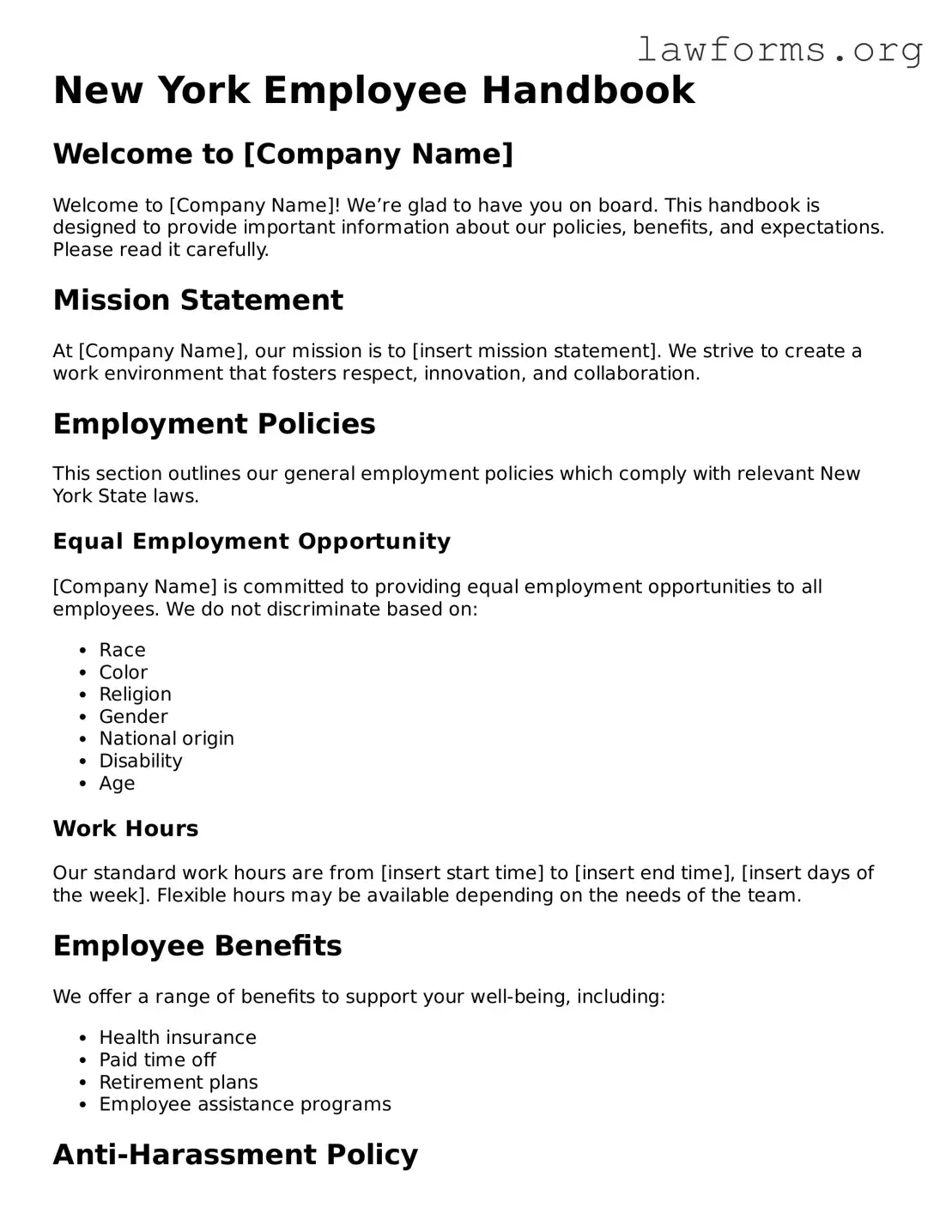New York Employee Handbook
Welcome to [Company Name]
Welcome to [Company Name]! We’re glad to have you on board. This handbook is designed to provide important information about our policies, benefits, and expectations. Please read it carefully.
Mission Statement
At [Company Name], our mission is to [insert mission statement]. We strive to create a work environment that fosters respect, innovation, and collaboration.
Employment Policies
This section outlines our general employment policies which comply with relevant New York State laws.
Equal Employment Opportunity
[Company Name] is committed to providing equal employment opportunities to all employees. We do not discriminate based on:
- Race
- Color
- Religion
- Gender
- National origin
- Disability
- Age
Work Hours
Our standard work hours are from [insert start time] to [insert end time], [insert days of the week]. Flexible hours may be available depending on the needs of the team.
Employee Benefits
We offer a range of benefits to support your well-being, including:
- Health insurance
- Paid time off
- Retirement plans
- Employee assistance programs
Anti-Harassment Policy
Harassment of any kind is not permitted at [Company Name]. Should you experience or witness harassment, please report it to a supervisor or HR.
Disciplinary Procedures
In the event of employee misconduct, the following steps may be taken:
- Verbal warning
- Written warning
- Suspension
- Termination
Conclusion
We’re excited to have you as part of our team. If you have questions about any of the information in this handbook, feel free to reach out to your supervisor or HR. Welcome aboard!
Contact Information
For further inquiries, please contact:
Name: [HR Contact Name]
Email: [HR Contact Email]
Phone: [HR Contact Phone]
